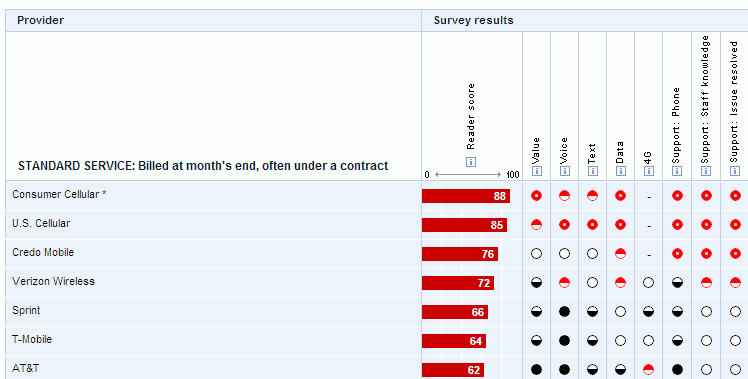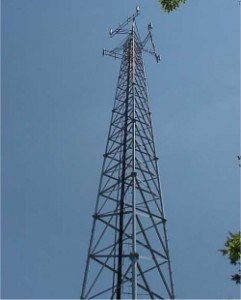T-Mobile USA has thrown down the gauntlet, announcing it intends to end the kind of phone subsidies that have allowed customers to pick up pricey smartphones like the iPhone for as low as $99, with a two-year contract.
Wireless subsidies have been part of the North American wireless experience for nearly two decades. In an effort to bring new customers on board, carriers wanted the upfront cost to consumers to be as low as possible. Until expensive smartphones arrived, consumers were assured they could get a new, cutting-edge phone at contract renewal time for very little money. Carriers tolerated the subsidy even for existing customers because the difference between the company’s cost and the amount consumers paid wasn’t large enough to negatively affect a carrier’s balance sheet.
Companies gradually earn back the subsidy over the course of a typical two year contract by artificially inflating prices for service plans and add-ons. Because wireless rates have been set with the assumption a customer has received a subsidized phone, it made sense to keep getting new equipment every two years, because customers pay for it on each monthly bill.
In most countries outside of North America, it works very differently. Most customers either pay for a phone outright or agree to finance its purchase through a wireless company, paying monthly installments for smartphones that often cost more than $600. Some companies offer more aggressive discounts if one agrees to a 1-3 year contract, but buyers still cover much of the cost themselves. In return, wireless companies abroad typically charge much lower rates for service and do not force people into lengthy contracts. Customers also find they can switch companies as easily as replacing a SIM card, activating an old phone on a new carrier’s network.
There are pros and cons to the subsidy model:
- Consumers get the latest phones at a reduced up-front cost up to every two-years;
- The subsidy win-back is collected gradually over the course of 24 months;
- Carriers aggressively compete on huge subsidies for popular phones;
- The reduced price of a subsidized phone brings reticent consumers into the market;
- Carriers have increased control over the equipment that is used on their network through price incentives;
CONS
- The subsidy model gives carriers an incentive to lock discounted phones to their network;
- Customers pay artificially higher prices for service, whether they take advantage of a subsidized phone offer or not;
- Consumers don’t realize the true cost of the phones and expect them to cost less than $200 regardless of their retail price;
- Customers are locked into lengthy contracts with stiff early termination fees to protect the subsidy win-back structure;
- Without a subsidy, equipment manufacturers would face natural market pressure to cut costs to remain affordable;
T-Mobile announced last week it was ending its phone subsidy program next year, and customers will be expected to bring their own phone, buy one at an unsubsidized rate, or finance a full price phone with the carrier. In return, customers will get a lower priced T-Mobile calling and data plan.
Some in the tech press are heralding the announcement as a consumer victory and a breakthrough for lower priced service plans. But before throwing the confetti, consider this.
T-Mobile is making customers bring or buy their own phones, but will still lock them into a two year contract with a $200 early termination fee.
T-Mobile’s retention of its contract plans might delineate the postpaid side of its business and its month-to-month, contract-free, prepaid business. But that does not mean much for customers.
John Legere, the new CEO of T-Mobile USA hinted the measure is designed to reduce customer churn — customers coming and going. Locking a customer in place with termination penalties assures shareholders customers are more likely to remain with T-Mobile for the life of their contract.
That represents a win for T-Mobile, but not for customers. Legere explained the benefits to investors:
“[We are going] to have a lower device subsidy obviously and overall value,” Legere told attendees at the Capital Markets Day Conference. “[… because of the] device margin — $200 to $250 — which we do not have to eat. Over a 24-month period [we get] a customer life value that is the difference between $550 on a Classic [traditional subsidy contract] plan and $600 on a Value [no-subsidy] plan.”
In other words, T-Mobile doesn’t have to front a device subsidy, still holds a customer with a two-year contract, and despite the lower-priced service plans, comes out $50 richer when the contract expires. T-Mobile is essentially admitting it does not return the entire value of its former subsidy back to the customer.
What is more, T-Mobile may pave the way for other carriers to also drop handset subsidies, keep the traditional two-year contract, and only slightly lower prices.
Nothing peeves Wall Street more than the huge subsidy costs carriers pay up front to discount the latest smartphones. Getting rid of subsidies while only mildly adjusting prices could be the next hidden “price increase,” the perfect gift for an investor that demands higher revenue from every customer.


 Subscribe
Subscribe











